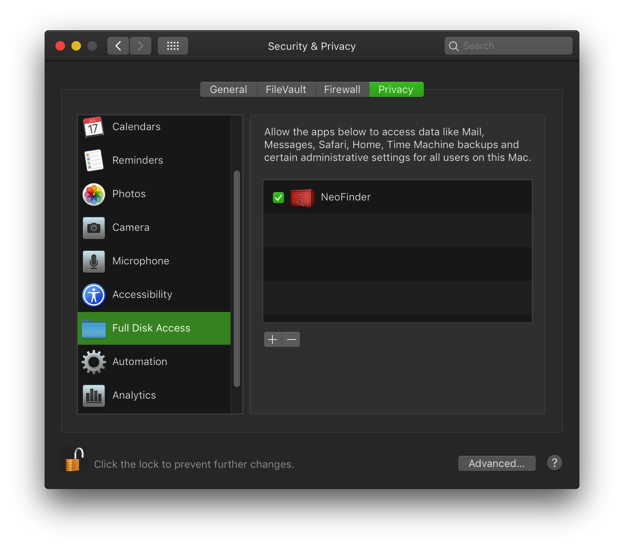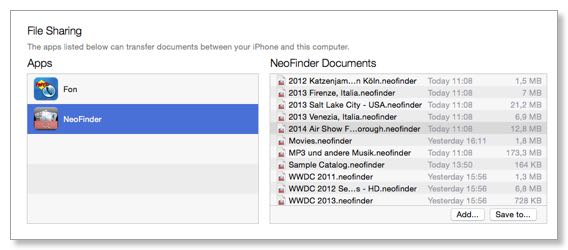
- Neofinder database search from another computer how to#
- Neofinder database search from another computer mac os x#
- Neofinder database search from another computer mac os#
- Neofinder database search from another computer archive#
Since some of my friends were quite positive about my ideas, I decided to put the results into a new program called "CDFinder". So I made up my mind and started my own project. None of the tools would even use drag&drop! Some expensive commercial applications were not even Power-PC native or would not run in the background. Some programs were simply too slow or did puke at large CD-ROMs.
Neofinder database search from another computer mac os#
One even created alias files of the contents of the CD-ROMs, a very unfortunate behaviour if you have some million files on hundreds of disks (the Mac OS did not like that in these days). Some of the tools I found required system extensions - which I did not like very much back in the days. Most unfortunately, my search turned out empty. Of course, I just found it on the last possible disk, hours later.Īfter this enlightening event I decided to search my huge disk collection for a suitable cataloging tool. The whole thing started back in December 1995 on one of those days that found me frantically searching my zillions of floppies and few CD-ROMs for one particular file. The story behind NeoFinder (and CDFinder): This gives you a quick introduction into NeoFinder, and what NeoFinder is all about. After you bought a license, you can activate that license to unlock the full features of NeoFinder, and just continue to use it with your existing data. The number of catalogs is limited to 10, which is surely enough to evaluate the application and its functions.

The Demo License of NeoFinder will remind you at every launch with a little dialog of the benefits of buying a license. There is now even a version of NeoFinder for iOS, so you can use the iPhone and iPad as well! Older NeoFinder and CDFinder versions are still available, supporting the previous Mac operating systems, all the way back to Mac OS 9.
Neofinder database search from another computer mac os x#
NeoFinder works with Mac OS X 10.9, 10.10, 10.11, macOS 10.12, or even macOS 10.13 and macOS 10.14, 10.15 and of course macOS 11 on the new M1-ARM "Apple Silicon" Macs.

This short introduction can only give you a first small glimpse of the possibilities that NeoFinder offers you to organize and manage your valuable media collection.

NeoFinder is also perfectly suited for small and also really large digital asset archives.
Neofinder database search from another computer how to#
The entire user interface of NeoFinder is carefully designed to help you with your work, so it is easy to learn how to use NeoFinder efficiently.įor professional users, NeoFinder even allows to share your catalog data in a network ! And with the help of the additional product "abeMeda for Windows", that even works across the platform boundaries. NeoFinder also offers powerful Find tools to quickly locate your files. Once you have cataloged your digital data with NeoFinder, you can browse the contents of all disks without any of the disks actually available on your computer! To help you catalog a larger amount of disks at once, the " Batch Catalog " feature will simply catalog every disk once it is inserted, and eject it afterwards.
Neofinder database search from another computer archive#
Besides the names of all files and folders of the cataloged disk, NeoFinder also stores a huge amount of additional valuable data, such as sizes, creation and modification dates, version information, comments, and also metadata such as MP3, EXIF, XMP, and IPTC file information, contents of several archive types (TAR, ZIP, rar, StuffIt.), durations of audio tracks, and much more. NeoFinder for Macintosh is a powerful and easy-to-use software that helps you to keep track of your digital data assets on all kinds of disks, CD-ROMs, DVDs, network volumes, and any other kind of digital volume, even Audio-CDs.Įvery disk has to be "cataloged" once, which means that NeoFinder will quickly read information about every item on that disk and store it in a catalog file inside the NeoFinder Database Folder.


 0 kommentar(er)
0 kommentar(er)
